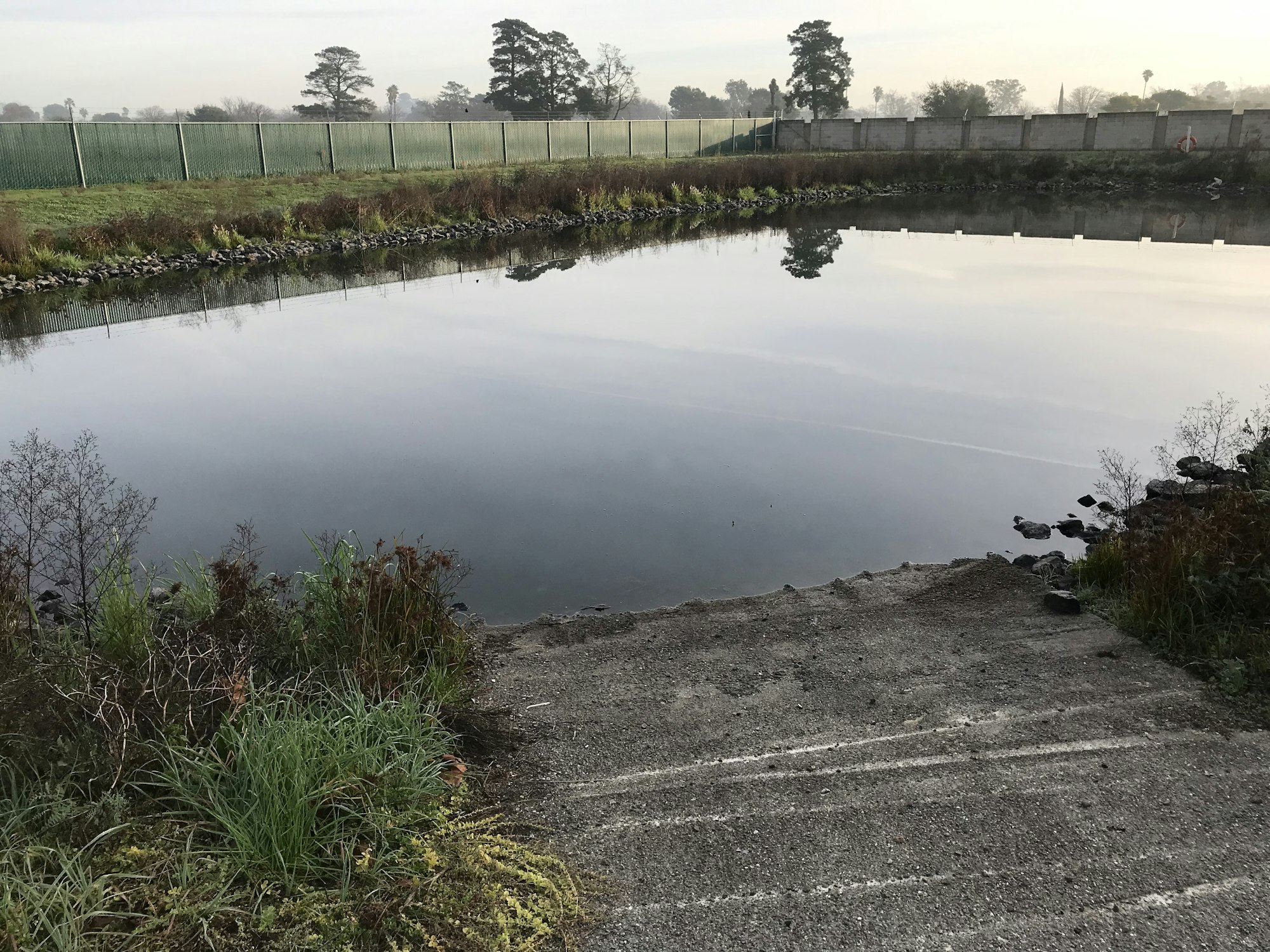Drainageway Construction and Maintenance Practices
Mosquitoes breed in creeks and ditches where ponding occurs due to obstructions, overflow of banks, excessive siltation and back-eddys created from low water flow during the dry months. Consequently, modification of drainageways (digging, and filling, etc.) is often necessary to allow free flow of water. Construction of new ditches must be undertaken to maintain adequate circulation of water.

Although obstructions and ponding in creeks and ditches most often occur naturally, alterations to water flow also arise from new construction, refuse deposits and agricultural activities. The correction and costs of such alterations become the responsibility of the person(s) or agency(s) involved when mosquito production results, and abatement expenditures incurred by SCMAD may be billed to the responsible party, pursuant to the procedures set forth in the California Heath and Safety Code, Sections 2274 et. seq.
One type of drainageway used to adequately drain low lands in the marsh is called a spreader ditch. This is a small ditch (18 X 18 inches) which drains into a main ditch or tidal water slough. Main ditches direct flow to a water control structure and thence into a tidal water slough.
Policies For Management of Drainageway Construction and Maintenance
- Water control structures (flap gates, slide gate, weir box, etc.) should be in working condition to facilitate the flooding and complete draining of managed wetlands.
- Clear and retrench spreader ditches approximately every three years.
- Excavate or dredge existing main ditches when necessary.
- Repair levees and remove debris and vegetation, which are obstructing natural stream channels if suchmaterials create a situation which may endanger public health and safety.
- Fill isolated potholes (depressions found in marsh areas) which may create mosquito problems and cannot feasibly be connected to circulating water.
- Connect pools (depressions found in streambeds) to the main flow of water by minor hand ditching when it appears that they are problem mosquito breeding sites.
- Maintain all access roads and levees in good repair to allow continuous mosquito surveillance, and provide access for control equipment.
- Install and maintain water control structures whenever possible to expedite flood water removal.
The preceding mosquito prevention criteria are intended only to offer guidance when considering the development of design options during the planning process for projects. Be advised that these practices have been found to be effective, however, once the project has been completed it is essential that conscientious maintenance and management practices be followed to help ensure the successful prevention of mosquito production.
Be further advised that under the California Health and Safety Code (Sections 2274 et. seq.) the responsibility for the cost of mosquito control may fall on the property owner.
